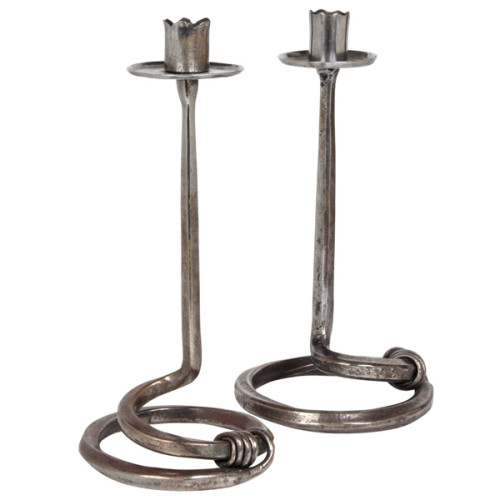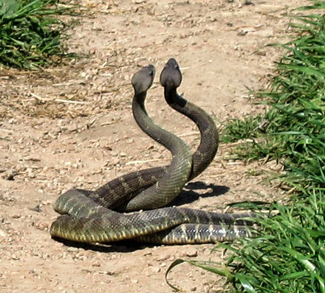Product Description
Edward Spencer/Artificers’ Guild (attr.) British Arts & Crafts wrought iron candlesticks c. 1910



Edward Spencer attr. (1872-1938) UK
Artificer’s Guild (1901-42) UK
Pair of candlesticks circa 1910.
Handwrought iron with a squared central support terminating in a attenuated vine like wrap.
H: 10 1/2″ x Dia: 5 1/2″
The Artificers’ Guild Ltd was founded in 1901 by the metalwork and enameler Nelson Dawson (1859-1942). It was one of the few guilds inspired by the Arts and Crafts movement to enjoy real commercial success, and remained in operation until 1938. It was bought out in 1903 by the Birmingham entrepreneur Montague Fordham and established on a more commercial footing, producing domestic metalwork, church plate and furnishings, presentation plate and jewelry.
Fordham promoted Edward Spencer (1873-1938), previously Dawson’s principal designer, to be Director of the Guild’s workshop in Hammersmith. The Guild also had a showroom originally located just off Regent Street. Spencer died in 1938, shortly after the firm was wound up. During its existence, the Guild operated as a substantial business, employing over 40 staff at its peak, including a large number of skilled craftsmen, many of whom would have been trained in the Guild’s workshop. Although unacknowledged for much of the 20th century, the Guild is now recognized as an important producer of high quality metalwork and jewelry during this period.
Edward Spencer/Artificers’ Guild (attr.) British Arts & Crafts wrought iron candlesticks c. 1910
SIR WILLIAM REYNOLD STEPHENS (1862–1943) London, UK
BRITISH ARTS & CRAFTS
Photo frame 1886
Bronze / copper lost wax casting with an elaborate stage set with a seeded figure and two capitals with mythological telamons, easel back
Marks: 18 December 1886, W Reynold Stephens London (signature and markings in the cast, bottom left front)
H: 6 5/8″ x W: 11 1/2″
Sculptor of decorative works, portraits and monumental figures, goldsmith and painter. Born 8 August 1862 in Detroit, U.S.A., of British parents; his father’s name was Stephens. Educated in England and Germany, then studied at the R.A. Schools and won prizes for sculpture and painting 1887. Assumed the additional name of Reynolds 1890. Exhibited at the R.A. 1886–1942, solely as a sculptor after 1894. Influenced to some extent by Alfred Gilbert and Pre-Raphaelite medievalism. Made many memorials, including those to Sir William Q. Orchardson, R.A., in St Paul’s, and to Archbishop Lord Davidson in the courtyard of Lambeth Palace. In 1904 he designed the chancel screen, reredos and other decorations for the Church of St Mary the Virgin, Great Warley, Essex. F.R.B.S. 1904, P.R.B.S. 1921–33, awarded R.B.S. gold medal 1928; knighted 1931. Died at Tunbridge Wells 23 February 1943.
